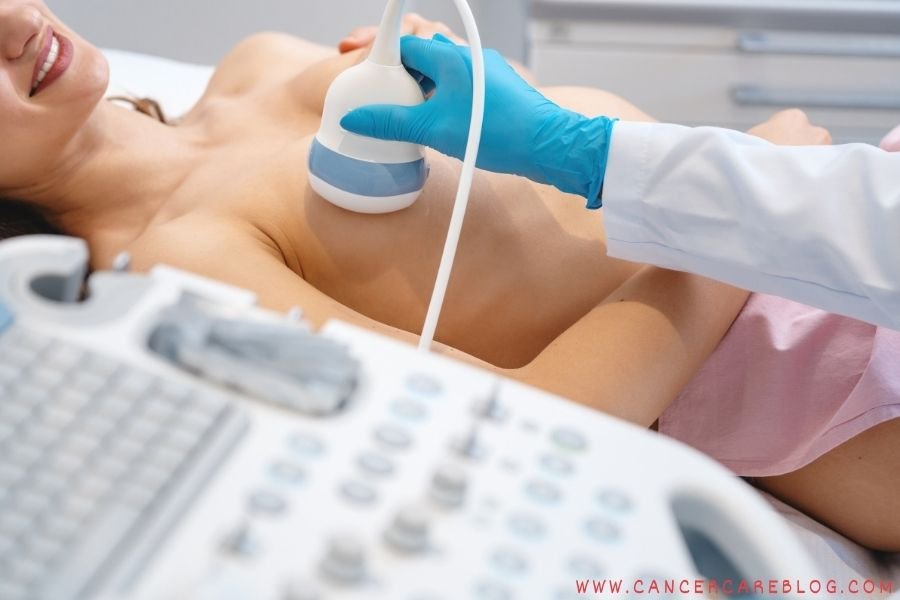A lump in the breast. A shadow on your mammogram. These moments can make your heart race. The next thing your doctor may say is, “We need to do a breast cancer biopsy.”
If that scares you, you’re not alone.
One of the most common questions people ask is: “Is a biopsy required or not?”
Let’s walk through it together—calmly and clearly.
This article explains when a breast cancer biopsy is necessary, what it means, if biopsy is dangerous or not, and how to understand the truth about biopsy without feeling overwhelmed.
What Is a Breast Cancer Biopsy?
A breast cancer biopsy is a test where a small sample of tissue or cells is taken from your breast. It’s then sent to a lab to check if the cells are cancerous.
This is the most accurate way to confirm if something in your breast is cancer, a harmless lump, or something in between.
When Is a Breast Cancer Biopsy Required?
Not every breast lump means cancer. But your doctor may recommend a biopsy if:
- You have a lump that feels hard or doesn’t move easily
- Your mammogram shows an unusual shadow or mass
- There is nipple discharge, especially if it’s bloody
- You have skin changes, like dimpling or redness
- An ultrasound or MRI shows something suspicious
Doctors don’t rush into biopsies. They usually order it only after imaging (like a mammogram or ultrasound) shows something that needs a closer look.
Think of a biopsy as a way to get answers, not guesses.
Is Biopsy Dangerous or Not?
Here’s the truth—biopsies are safe.
The idea that a biopsy can spread cancer is a myth. This fear has been around for years, but medical studies and experts have shown that it’s not true. Modern biopsy techniques are gentle, precise, and designed to avoid spreading anything.
So, if you’re wondering “biopsy is dangerous or not,” the answer is: No, it’s not dangerous.
It’s a trusted part of cancer diagnosis.
Types of Breast Cancer Biopsies
There are several types of breast cancer biopsy procedures. Your doctor will choose one based on what they see in imaging.
- Fine Needle Aspiration (FNA) – Uses a thin needle to remove fluid or cells
- Core Needle Biopsy – Takes a small cylinder of tissue with a bigger needle
- Surgical Biopsy – Removes a part (incisional) or all (excisional) of the lump
- Stereotactic Biopsy – Uses mammogram guidance to find the exact spot
- MRI-guided Biopsy – Used when the lump shows clearly only on MRI
Breast Cancer Biopsy Side Effects
Now let’s talk about the side effects of breast cancer biopsy. They are usually mild and go away quickly.
Common ones include:
- Soreness or pain where the needle was inserted
- Bruising or a small lump that fades in a few days
- Swelling or tenderness
- Minor bleeding
- In rare cases, infection
Doctors may place a tiny biopsy marker clip during the test. It’s safe, painless, and helps locate the exact spot later during surgery or treatment.
Most people go back to normal activities within 24 to 48 hours.
What Happens After a Biopsy?
After your breast cancer biopsy, the tissue sample is sent to a lab. The pathologist checks:
- Are the cells cancerous?
- If yes, what type of breast cancer is it?
- Is it hormone-receptor positive or negative?
- What is the grade (how aggressive is it)?
This helps your doctor plan the best breast cancer treatment for you.
It may take a few days to get your results. Waiting can be the hardest part emotionally—but knowing gives you power.
Should I Say Yes to a Biopsy?
Many people hesitate. They search online, ask friends, and wonder:
“Is this really needed?”
“Can’t we wait and see?”
“What if it’s nothing serious?”
Here’s the thing: if your doctor recommends a biopsy, it’s because imaging alone isn’t enough to be sure.
A biopsy can:
- Confirm if you need treatment
- Avoid unnecessary surgery if it’s not cancer
- Catch cancer early, when it’s most curable
So while it feels scary, it might save your life.
How to Prepare for a Biopsy
Here are a few simple tips to help you prepare:
- Wear a soft bra or loose top
- Bring someone with you if you’re nervous
- Don’t take blood thinners unless your doctor says it’s okay
- Ask questions—your doctor is there to help
- Plan some rest time after the procedure
Final Thoughts
A breast cancer biopsy is a tool. It’s not the enemy—it’s your ally in finding out what’s really going on inside your body.
If you’ve been told you need a biopsy, remember this:
You’re not powerless. You’re taking charge of your health.
The test may bring answers you don’t want to hear—or it may bring relief. Either way, you’ll know. And knowing means you can act.
Let go of the myths. Trust the process. You’re stronger than fear.
Sources
American Cancer Society – Understanding Breast Biopsy



